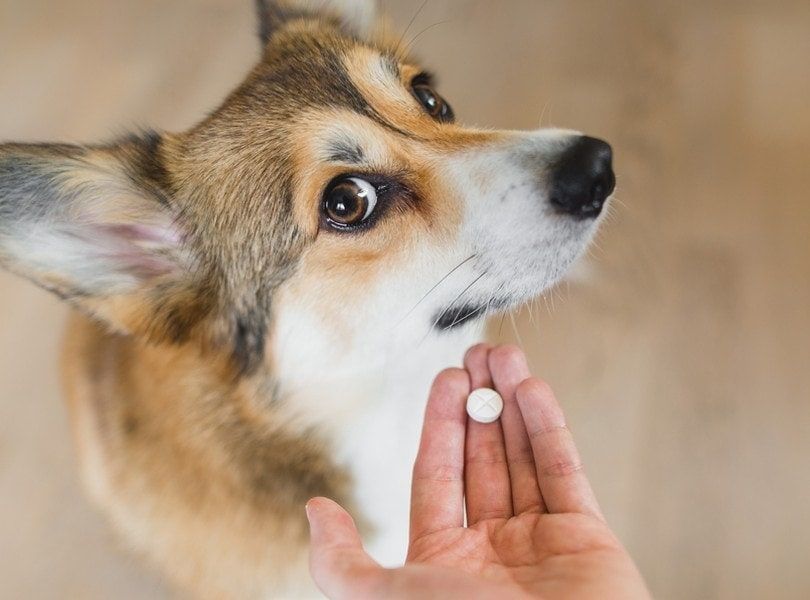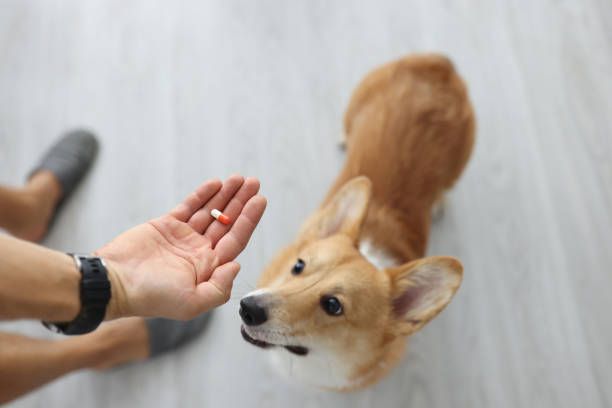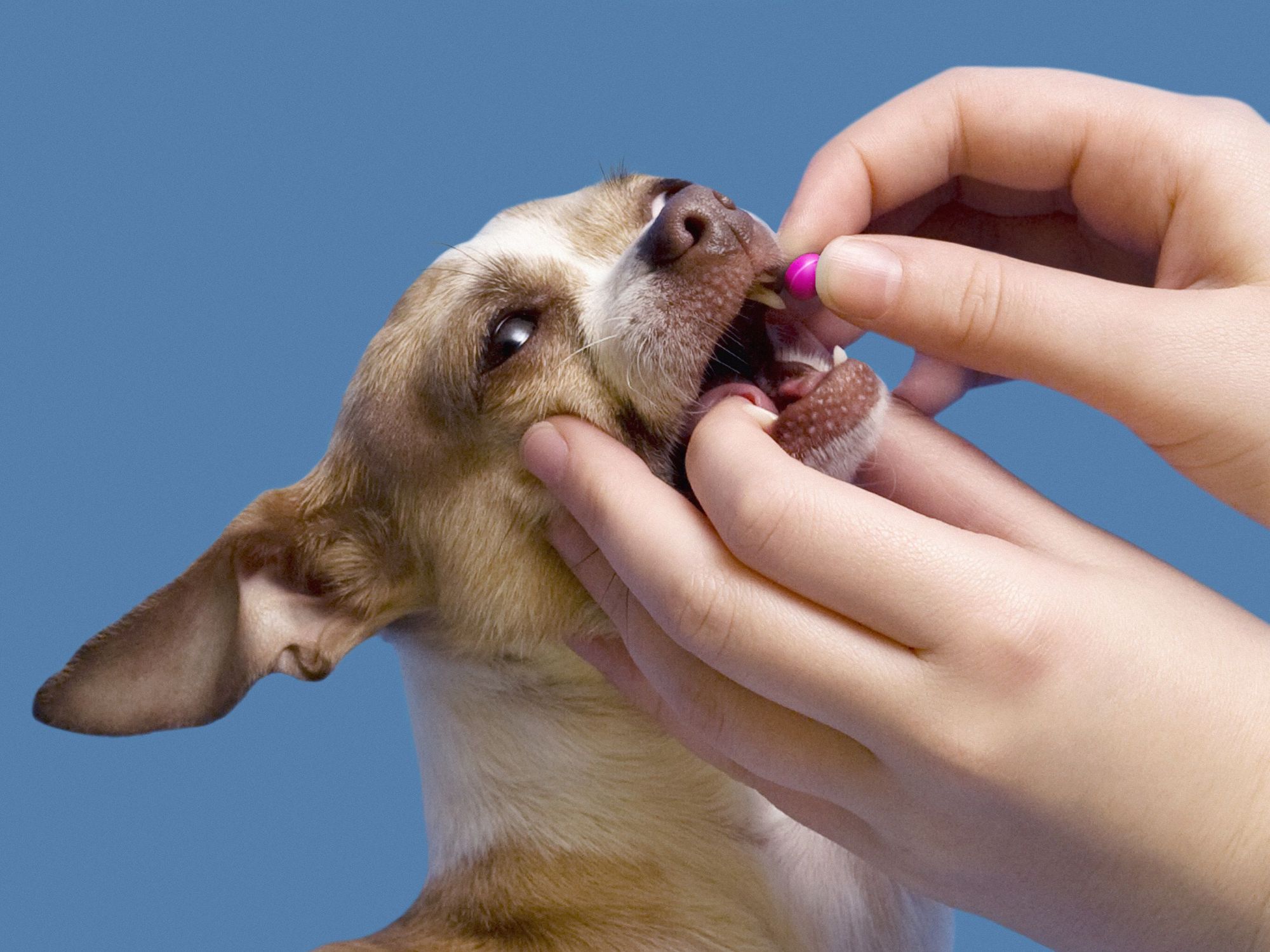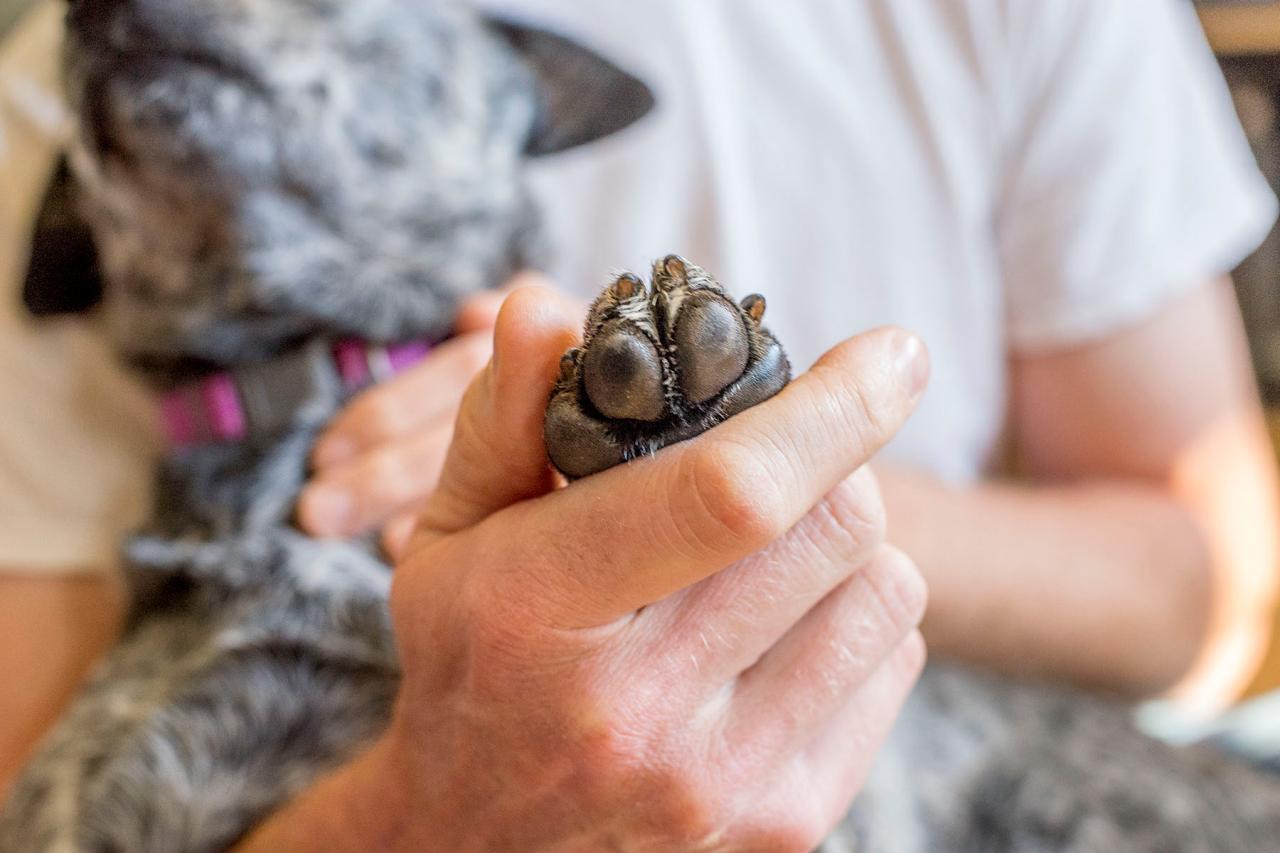Many pet owners can relate to the struggle of giving pills to their furry friends. Whether it's a daily supplement or a necessary medication, convincing a dog to swallow a pill can be a daunting task. In this guide, we'll explore effective and stress-free methods to administer pills to your dog while ensuring a positive experience for both of you.

Understanding Your Dog's Behavior
Dogs, much like humans, exhibit a range of emotions and behaviors that can significantly impact their response to medication. Before attempting to administer pills, it's crucial to understand your dog's behavior and recognize signs of stress or resistance. Dogs may display subtle cues such as avoiding eye contact, trembling, or even growling when they feel uneasy.
Building trust is a fundamental aspect of navigating your dog's behavior during medication time. Spend quality time with your pet in a calm and relaxed environment, reinforcing positive interactions. By understanding and addressing your dog's emotional state, you lay the foundation for a more cooperative pill administration process.
Choosing the Right Pill Administration Method
Administering pills to dogs comes with various challenges, and there's no one-size-fits-all approach. Different dogs may respond better to different methods, and factors such as the size of the pill and your dog's preferences play a significant role.

Explore various administration methods, such as using pill pockets, hiding pills in treats, or crushing pills and mixing them with food. Consider your dog's comfort and your ability to execute the chosen method consistently. The right approach will not only ensure successful pill administration but also create a positive experience for your furry friend.
Preparing Your Dog for Medication
Preparing your dog for medication involves establishing a positive association with the process. Dogs are quick to pick up on routines, and if medication time is consistently associated with stress, they may become resistant. Here are some steps to prepare your dog for medication:
- Positive Reinforcement: Introduce the concept of treats and positive reinforcement associated with medication. Use treats during non-medication times to create a positive association.
- Familiarization: Allow your dog to inspect the pill bottle or packaging without any pressure. This helps reduce separation anxiety by making the process less mysterious.
- Treat Trials: Offer your dog a treat with no medication. This builds trust and helps them associate the act of taking something from you with a positive experience.
By taking the time to prepare your dog mentally and emotionally for medication, you set the stage for a smoother and more stress-free administration process.
Step-by-Step Guide: Traditional Pill Pockets
Giving pills to your dog doesn't have to be a struggle when you opt for the convenience of traditional pill pockets. These are specially designed treats with a hidden pocket that can easily conceal medication. Follow this step-by-step guide for a stress-free pill administration:
- Introduce the Pill Pocket: Start by offering the pill pocket to your dog as a regular treat. Allow them to sniff it, lick it, and get comfortable with the texture and smell.
- Positive Association: Associate the pill pocket with positive experiences. Give your dog a few empty pill pockets as treats during non-medication times. This helps create a positive connection between the treat and a tasty reward.
- Insert the Pill: Once your dog is comfortable with the pill pocket, gently insert the pill into the built-in pocket. Ensure the pill is fully concealed, so your dog doesn't detect it.
- Offer the Treat: Present the filled pill pocket to your dog. Most dogs will eagerly take the treat, unknowingly consuming the hidden pill in the process.
- Immediate Reward: Follow up with immediate praise and an additional treat as a reward for cooperation. This reinforces the positive association with the entire process.
Using traditional pill pockets is an effective and hassle-free way to administer medication to your dog, making it a win-win for both pet owners and their furry friends.
Alternative Methods: Crushing Pills and Mixing with Food
For dogs that may be wary of pill pockets, an alternative method involves crushing the pill and mixing it with their favorite food. Here's a safe and straightforward approach:
- Consult Your Veterinarian: Before crushing any medication, consult your veterinarian to ensure it can be safely administered in this form.
- Crush the Pill: Use a pill crusher or mortar and pestle to crush the pill into a fine powder. This ensures that the medication is evenly distributed throughout the food.
- Choose a Suitable Food: Select a small amount of wet dog food, ensuring it's a texture your dog enjoys. The strong aroma of the food can help mask the scent of the medication.
- Mix Thoroughly: Sprinkle the crushed pill over the food and mix it thoroughly. Ensure the medication is well-disguised within the food.
- Serve to Your Dog: Present the medicated food to your dog in their regular feeding bowl. Most dogs will consume it without detecting the hidden pill.
Always monitor your dog during and after the process to ensure the entire pill has been ingested. This method provides an effective way to administer medication while maintaining your dog's trust and cooperation.
Incorporating Medication into Playtime
Making medication time enjoyable for your dog can involve incorporating it into playtime. This method is particularly useful for dogs who may be resistant to the more traditional approaches. Here's how to seamlessly integrate medication into play:
- Select Engaging Toys: Choose toys that capture your dog's attention and keep them occupied. Interactive dog toys, puzzle feeders, or toys with hidden compartments work well.
- Associate Toys with Medication: Introduce the chosen toys during playtime when medication is not involved. This builds a positive association between the puzzle toys and fun experiences.
- Hide the Pill in a Toy: Prior to medication time, hide the pill in one of the selected toys. Ensure it's securely placed within the toy's structure.
- Engage Your Dog: Initiate playtime with the toy containing the hidden pill. Your dog's focus on the enjoyable activity will likely result in them consuming the medication without resistance.
- Reward and Praise: Immediately after your dog successfully interacts with the toy and ingests the pill, offer praise and a small treat. This reinforces the positive connection between playtime and medication.
Incorporating medication into playtime not only distracts your dog but also turns the entire process into an enjoyable and rewarding experience. This method can be particularly effective for dogs who are hesitant or anxious about taking pills.
Dealing with Resistant Dogs
It's not uncommon for dogs to be resistant to taking medication and handling this resistance with patience and care is crucial. Here are tips for dealing with resistant dogs during medication time:

- Stay Calm and Patient: Dogs are sensitive to your energy. Stay calm and patient, avoiding frustration or force, which can exacerbate resistance.
- Use Gentle Restraint if Necessary: If your dog tends to squirm or resist, use gentle restraint. This can involve holding your dog's muzzle softly or using a gentle wrap to keep them still.
- Seek Professional Guidance: If resistance persists, consult your veterinarian. They can provide advice on alternative methods or recommend medications with more palatable forms.
- Consider Pill Pocket Alternatives: If your dog refuses pill pockets, explore other options like hiding the pill in a treat or using a pill dispenser. Sometimes a change in method can make a significant difference.
- Break the Process Into Smaller Steps: If the resistance is due to anxiety or fear, break down the process into smaller, more manageable steps. Gradually introduce each step, offering rewards and positive reinforcement along the way.
- Experiment with Different Treats: Dogs have preferences, and finding the right treat to mask the pill's taste is essential. Experiment with different flavors and textures until you find one that works for your dog.
Remember, it's essential to respect your dog's boundaries and avoid creating negative associations with medication. By addressing resistance calmly and creatively, you can make the experience more tolerable for both you and your furry friend.
Making Medication Time a Positive Experience
Turning medication time into a positive experience is key to ensuring cooperation from your dog. Here's how to create a positive association:
- Offer Treats Before Medication: Before introducing medication, give your dog a few treats. This establishes a positive atmosphere around the act of receiving treats.
- Use Positive Reinforcement: Immediately after successful medication, shower your dog with praise and offer additional treats. Positive reinforcement reinforces the idea that taking medication results in pleasant outcomes.
- Create a Routine: Dogs thrive on routine. Establish a consistent schedule for medication, and always follow it with positive experiences like playtime or a short walk.
- Associate Medication with Activities They Love: If your dog enjoys a specific activity, such as going for a car ride or receiving belly rubs, incorporate these activities into medication time. This way, your dog associates medication with enjoyable experiences.
- Stay Calm and Relaxed: Dogs can pick up on your energy. Stay calm and relaxed during medication time. Speak to your dog in a soothing voice and maintain a reassuring demeanor.
- Celebrate Small Wins: Even incremental progress deserves celebration. If your dog takes the medication more easily than usual, acknowledge and reward this positive behavior.
Common Mistakes to Avoid
To ensure a smooth medication process, steer clear of these common mistakes:
- Rushing the Process: Take your time and allow your dog to get comfortable with each step of the medication process. Rushing can create anxiety and resistance.
- Using a Negative Tone: Dogs are perceptive to tone. Avoid using a harsh or negative tone, as this can make the experience stressful for your dog.
- Neglecting Positive Reinforcement: Positive reinforcement is key to success. Always reward your dog for cooperating with medication, even if it's just a small treat and verbal praise.
- Ignoring Signs of Discomfort: Pay attention to your dog's body language. If they show signs of discomfort or stress, pause and reassess the situation. Ignoring these signs can lead to increased resistance.
- Not Consulting Your Veterinarian: If you encounter persistent issues, consult your veterinarian. They can offer tailored advice, suggest alternative medications, or provide additional resources to ease the process.
- Neglecting Consistency: Consistency is crucial for creating positive associations. Stick to a consistent routine for medication time to build trust and minimize anxiety.
By avoiding these common mistakes and adopting a positive, patient approach, you can transform medication time from a struggle into a positive experience for both you and your dog.
Consulting Your Veterinarian
While this guide provides valuable insights, the expertise of your veterinarian is indispensable when it comes to your dog's health and well-being. Here's why consulting your veterinarian is essential during the medication process:
- Personalized Advice: Veterinarians can offer personalized advice based on your dog's specific health needs, ensuring that the chosen medication and administration method are appropriate.
- Alternative Options: If your dog is resistant to traditional methods, veterinarians can suggest alternative medications or administration techniques that might be more suitable for your pet.
- Dosage Adjustments: Veterinarians can adjust the dosage of medication based on your dog's size, weight, and overall health. This ensures that the medication is both effective and safe.
- Addressing Underlying Issues: If your dog's resistance to medication is due to an underlying health issue or discomfort, veterinarians can identify and address these concerns, making the medication process more manageable.
- Professional Guidance: Veterinarians are experienced in handling various scenarios related to pet care. Seeking their guidance provides a level of assurance and expertise that online guides cannot replace.
Remember, your veterinarian is your best resource for any concerns regarding your dog's health. Before starting any medication regimen, consult with them to ensure the safety and well-being of your furry friend.

Tips for Hiding Pills in Homemade Treats
Making medication time enjoyable for your dog involves creative ways to hide pills in homemade treats. Here are tips for successfully concealing medication:
- Choose Irresistible Treats: Opt for homemade treats with strong flavors and aromas that can effectively mask the scent of the medication.
- Create Pill Pockets: Design treats with pockets or crevices where you can securely hide the pill. This helps to ensure that your dog consumes the entire dose without detecting the medication.
- Use Wet Ingredients: Incorporate wet ingredients like peanut butter, yogurt, or canned pumpkin into your homemade treats. These substances can help conceal the texture and taste of the pill.
- Divide the Medication: If the pill is large, consider asking your veterinarian if it can be divided. This makes it easier to hide in smaller treats, reducing the risk of your dog detecting the medication.
- Experiment with Recipes: Don't be afraid to experiment with different treat recipes until you find one that your dog loves. The goal is to make the treats so enticing that your dog eagerly accepts them.
- Associate Treats with Positivity: Give homemade treats even when medication is not involved. This creates a positive association with the treats, making your dog more willing to accept them during medication time.
By using creativity and considering your dog's preferences, you can turn medication time into a treat-filled experience that your furry friend looks forward to.
Training for Pill Administration
Training your dog for pill administration involves a gradual process that builds trust and cooperation. Here's a step-by-step guide to effective training:
- Start with Positive Associations: Begin by associating treats with positive experiences. Offer treats without medication to create a positive connection between taking something from you and receiving a reward.
- Introduce the Pill: Once your dog is comfortable taking treats, introduce the pill without actually administering it. Allow your dog to sniff and inspect the pill without any pressure.
- Gradual Touch Sensitization: Gently touch your dog's muzzle and mouth area without attempting to administer the pill. This helps desensitize your dog to the sensation and reduces resistance.
- Practice with Treats: Use small, soft treats to practice the motion of placing something in your dog's mouth. This mimics the action of administering a pill.
- Gradual Introduction of the Pill: When your dog is comfortable with the previous steps, introduce the pill alongside treats. Place the pill in your dog's mouth, followed immediately by a treat as a reward.
- Positive Reinforcement: Reinforce positive behavior with immediate praise and treats. The goal is for your dog to associate the act of taking a pill with a positive outcome.
- Consistency is Key: Practice pill administration regularly, even when your dog isn't on medication. This ensures that the process remains familiar and less stressful for your pet.
Remember, patience and positive reinforcement are crucial during training. By gradually introducing the pill in a positive context, you can build trust and cooperation, making the pill administration process more seamless.
The Role of Consistency
Consistency plays a vital role in successful pill administration. Here's why maintaining a consistent routine is essential:
- Establishing Predictability: Dogs thrive on routine and predictability. A consistent schedule for medication creates a sense of predictability for your dog, reducing anxiety.
- Building Trust: Consistency builds trust between you and your dog. When medication time follows a predictable routine, your dog is more likely to cooperate.
- Reducing Anxiety: Changes in routine can create stress for dogs. A consistent approach to medication time helps minimize anxiety associated with the process.
- Reinforcing Positive Behavior: Consistency reinforces positive behavior. When positive reinforcement is consistently paired with medication, your dog associates the process with pleasant experiences.
- Easier Adaptation: Dogs are quick to adapt to routines. Consistency makes it easier for your dog to adapt to the idea of medication, making the entire process smoother over time.
Ensure that the time, location, and manner of medication administration remain as consistent as possible. Consistency not only makes the process easier for your happy dog but also contributes to a positive and stress-free experience.

Conclusion
Giving a dog a pill may seem like a challenge, but with patience, understanding, and the right approach, it can become a stress-free routine. Tailor your method to your dog's preferences, seek professional advice when needed, and remember to celebrate small victories.
Frequently Asked Questions (FAQs)
- Q: What if my dog refuses to take the pill using any of the suggested methods?
- A: If your dog is consistently resistant, consult your veterinarian for alternative options or formulations.
- Q: Can I use human-grade food to hide the pill in treats?
- A: While some human-grade foods can be used, always check with your veterinarian to ensure they are safe for your dog.
- Q: How often should I give positive reinforcement during pill administration?
- A: Offer positive reinforcement immediately after successfully administering the pill and continue to do so consistently.
- Q: Are there specific toys that work best for distracting dogs during medication time?
- A: Choose toys that capture your dog's attention without causing frustration. Experiment to find what works best for your dog.
- Q: Should I adjust my dog's diet when giving medication?
- A: Consult your veterinarian before making any significant changes to your dog's diet, especially when incorporating medication.






